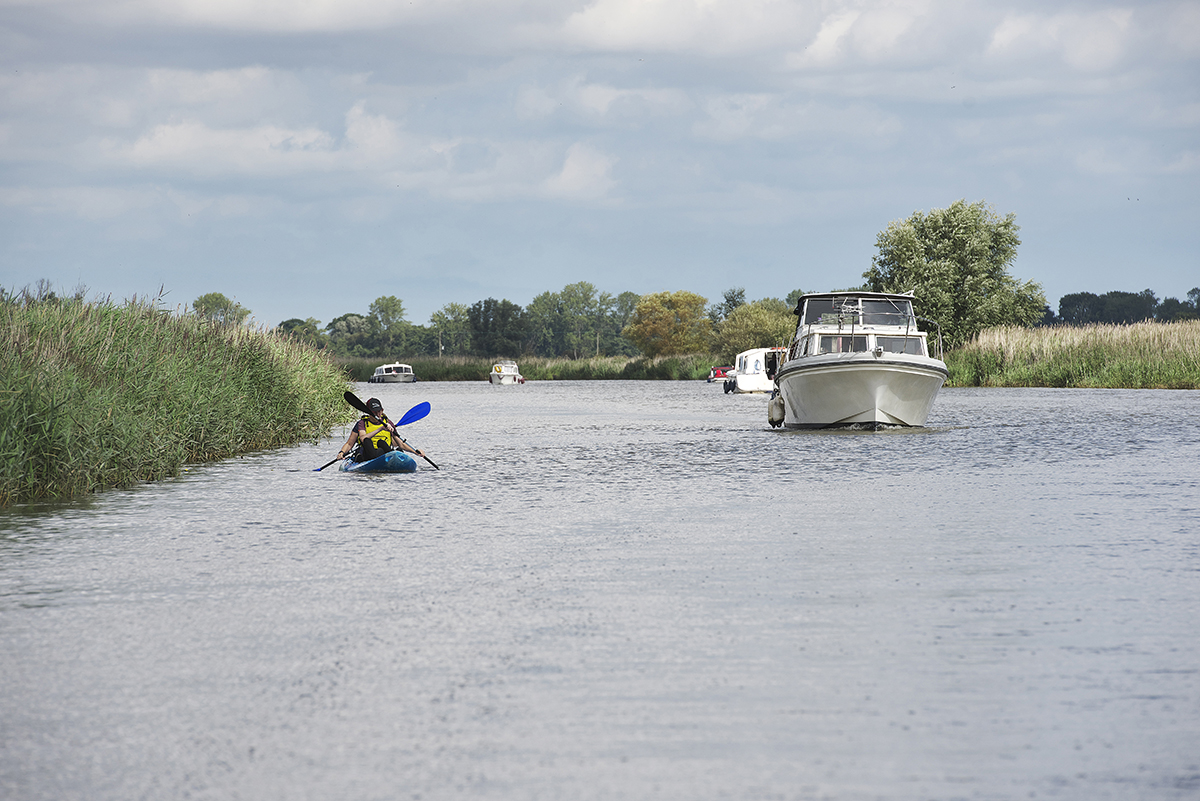Navigating the Broads
The Broads is a National Park family member unlike any other with 200 kilometres of navigable waterways to explore.
It's a safe environment for boating, as long as you follow the rules of the river. If you are not familiar with the area, this section aims to make your time on the water as easy and stress-free as possible.
Rules of the river
 To ensure that the Broads is a special and safe place for all, the Broads Authority has a number of Byelaws and speed limits. These are based on the International Rules for Preventing Collisions at Sea but with certain amendments which reflect special conditions of Broads navigation.
To ensure that the Broads is a special and safe place for all, the Broads Authority has a number of Byelaws and speed limits. These are based on the International Rules for Preventing Collisions at Sea but with certain amendments which reflect special conditions of Broads navigation.
Sometimes there are certain situations or hazards in the Broads which may affect navigation. Have a look at our urgent boating news and Notices to mariners to see if there is anything that may affect your journey.
Organising events
If you are planning an organised boating event please see our events guidance web page for more information on how to proceed.
Boating safety
Safety should always be a priority both in and around the water. There are simple precautions you can take which will help you avoid trouble.
The Broads are tidal rivers which means that the height of the water is changeable depending on the tides. Often it is necessary for larger boats to wait for low tide to get under certain bridges. Tides are particularly important on Breydon water. We have tide tables for you to refer to so you can plan your journey in advance, and information on bridge heights which should make things a little easier too.
Information provided in water depths and navigation notes is split into Northern and Southern Rivers. For each river and reach there are the notes highlight hazards that may need to be considered.
Latest weather conditions can be found via the Met Office's zoom-able forecast map for the East of England.
Bringing your boat in from the sea
Breydon Water provides a gateway to visitors who are bringing your boat in from the sea. Whether you enter the Broads via Lowestoft or Great Yarmouth, we have advice on using these ports. You can also find information about tolls and insurance.
Vessels over 24m in length
There is a General Direction in place restricting vessels over 24m overall length from entering the Broads without the prior permission from the Broads Authority. Vessels over 24m wishing to enter the Broads must submit a completed Application Form at least 42 working days in advance of their intended passage.
Further information, including the relevant forms, can be found on the General Direction webpage.

